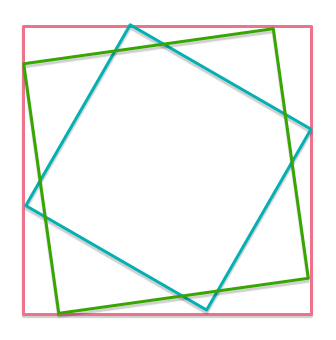Just An Inscribed Square

A square is inscribed inside a square , with on . If is uniformly distributed along side , the expected area of is . What is the side length of square (in )?
Give your answer to 1 decimal place.
The answer is 6.0.
This section requires Javascript.
You are seeing this because something didn't load right. We suggest you, (a) try
refreshing the page, (b) enabling javascript if it is disabled on your browser and,
finally, (c)
loading the
non-javascript version of this page
. We're sorry about the hassle.
Let x be the nearest distance of one vertex of PQRS to one vertex of ABCD along the larger square. If Square ABCD has side length s , then the area of Square PQRS is given by:
A ( x ) = x 2 + ( s − x ) 2 A ( x ) = 2 x 2 − 2 s x + s 2 Note that this was the very method used to prove the Pythagorean Theorem.
Now, to find the average value, we have:
A ( x ) a v e = s − 0 ∫ 0 s A ( x ) d x
A ( x ) a v e = s ∫ 0 s 2 x 2 − 2 s x + s 2 d x
A ( x ) a v e = s 3 2 x 3 − s x 2 + s 2 x ∣ 0 s
A ( x ) a v e = s 3 2 s 3
A ( x ) a v e = 3 2 s 2
So now we have found out the average area of PQRS in terms of s .
We can now equate this to 24 to find the value of s .
3 2 s 2 = 2 4
s 2 = 3 6
s = 6